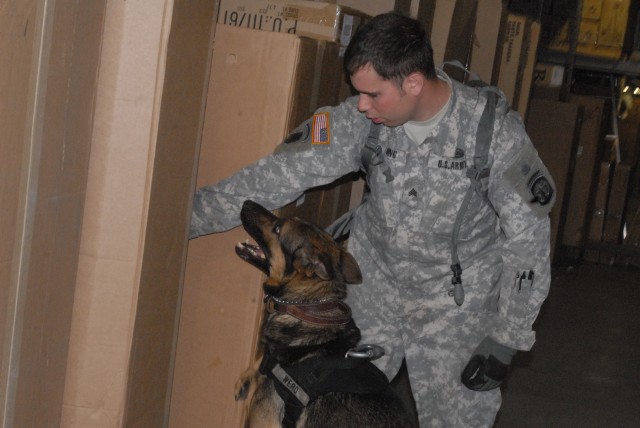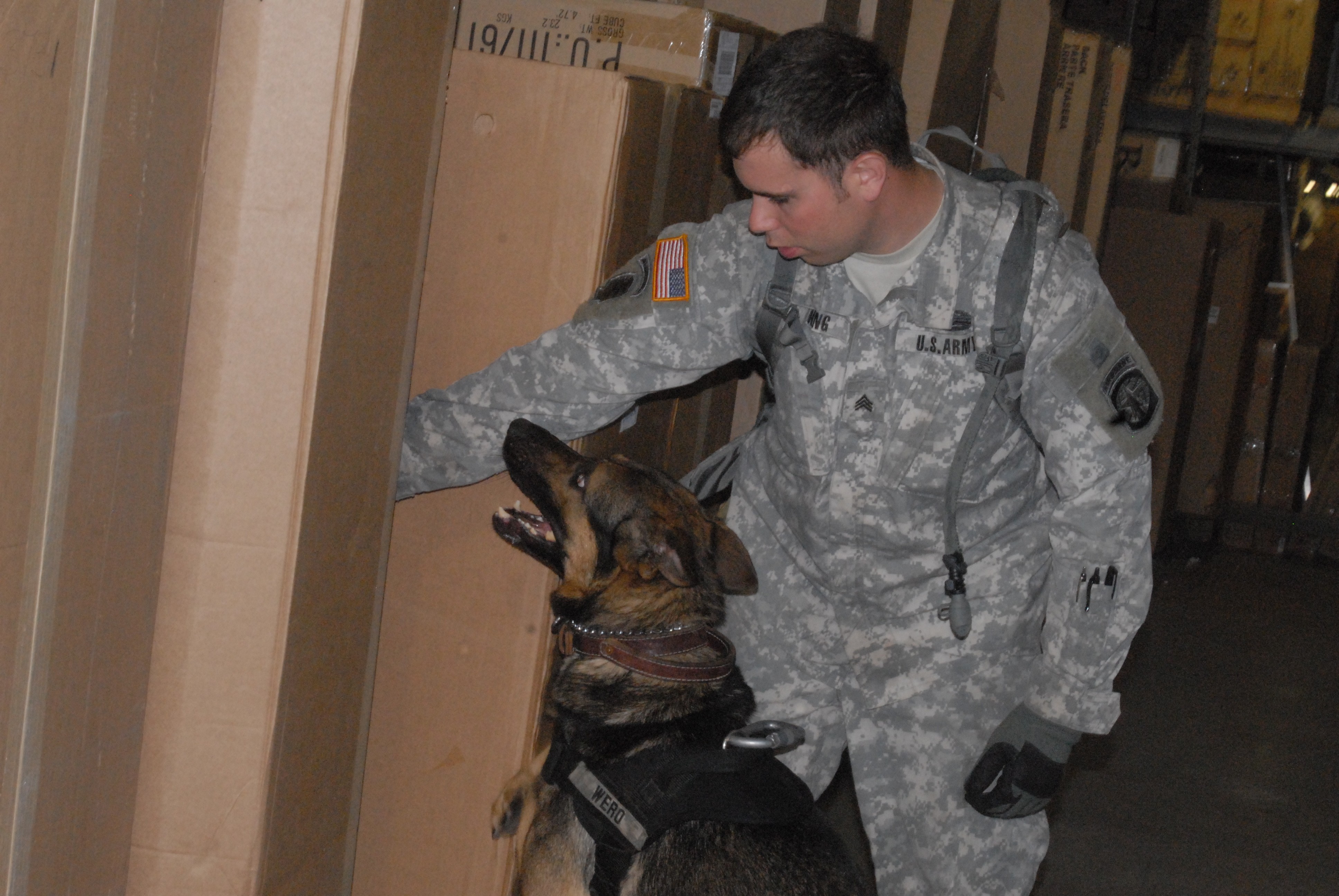FORT STEWART, Ga </B>-- Sergeant Terry Young and his partner, Staff Sgt. Wero, have a dangerous job, which makes their training all the more important for both of them. The two make up an explosive detection team, consisting of dog and dog handler assigned to Headquarters and Headquarters Detachment, 385th Military Police Battalion. Their skills as a team were tested during a training exercise conducted in Fort Stewart's Furniture Store warehouse, Jan. 21.
According to the unit's kennel master, Sgt. 1st Class Matthew Gillespie, their unit conducts team training to ensure the dog and handler are working together the way they need to in a combat environment. He said he placed some explosive material in hard to find places to test the team's ability to find the hidden material. As Sgt. Young worked with Staff Sgt. Wero, calling and whistling for him to check or re-check a particular area, Staff Sgt. Dennis Asher, the unit's plans and operations noncommissioned officer, explained how dogs are able to detect smells that
humans cannot.
"A dog's sense of smell is about 40 times stronger than ours," he said, as Staff Sgt. Wero raced up one aisle in the warehouse, checking behind boxes at the floor level then as high as he could reach by standing on his hind legs. "Think of a dog's nose like the sight aperture on a rifle scope. The dog's nostrils would be centered on the cross-hairs of the reticle. As trace particles of an odor are picked up by the dog's nose, his brain tells him if the odor is stronger in the upper right quadrant or lower left quadrant and so on, then he reacts by going in the direction where the scent is strongest."
"He's bracketing a smell right now," Sgt. Young said, keeping his dog focused in the area where the scent seemed strongest. "It appears to be up high and in this area."
A few minutes later, Staff Sgt. Wero became extra excited about a particular shelf well above him. He leaped onto a box and began sniffing at the contents of boxes on that shelf. Then he jumped from the box onto a metal desk pushed against the shelf. At this point, he focused all his attention on the bottom drawer of a short, wooden cabinet, sniffing and scratching at it.
Sergeant Young grabbed hold of him to pull him back, asking him if he was sure. His partner responded with sort of an excited moan or groan, as if trying to speak. At this point, Sgt. Young commanded his partner to "sit." Staff Sergeant Wero obediently sat below the shelf with his eyes fixed on the wooden desk above.
"Right now is when we'd usually call (Explosive Ordnance Disposal)," Sgt. 1st Class Gillespie explained. "Good job!"
Dogs have been used by the United States military since the early 19th century, mostly as guards, messengers and mascots but also as trackers. Sergeant First Class Gillespie noted one major difference between explosive detection dogs and other dogs used by military police is that their dogs are not trained to attack, even though all dogs will bite if given a reason.
Sergeant Young, a Silver Star recipient and newlywed has been in the Army for five years, with half that time as a dog handler. He and Staff Sgt. Wero are scheduled to deploy again in April.


Social Sharing